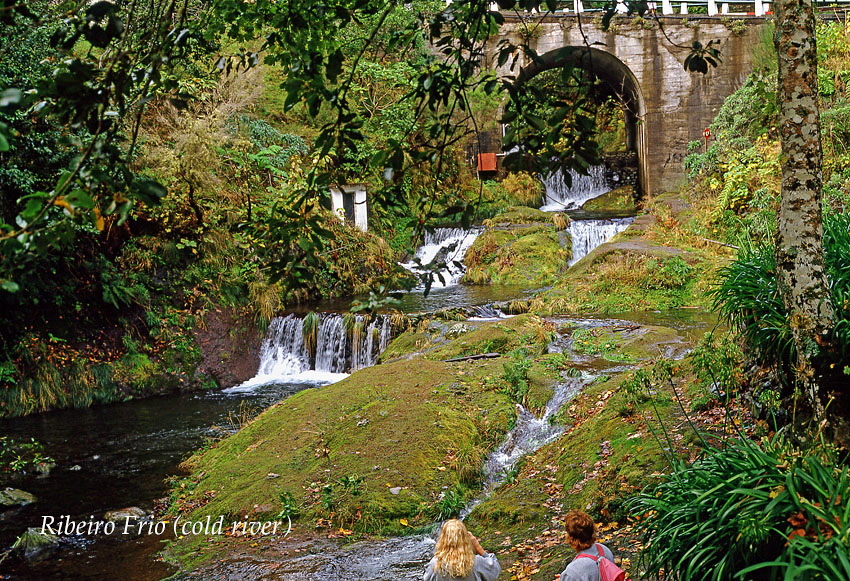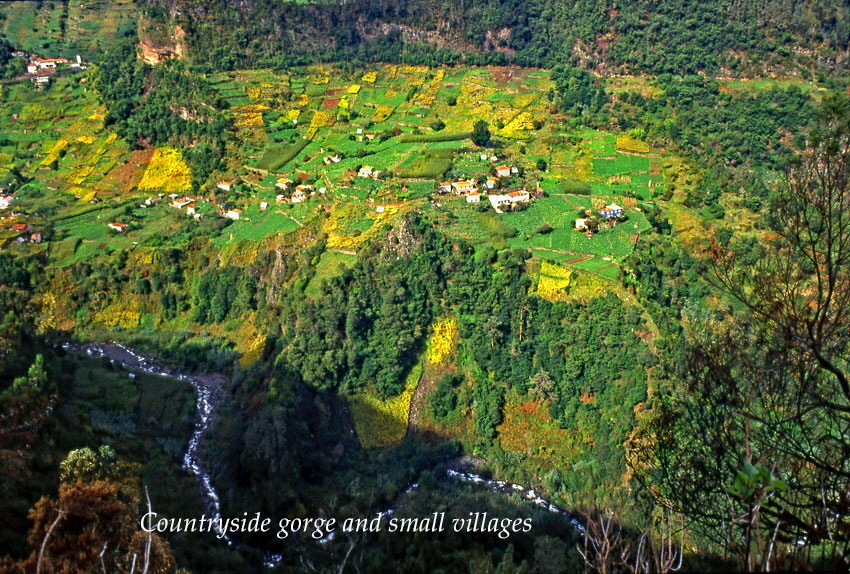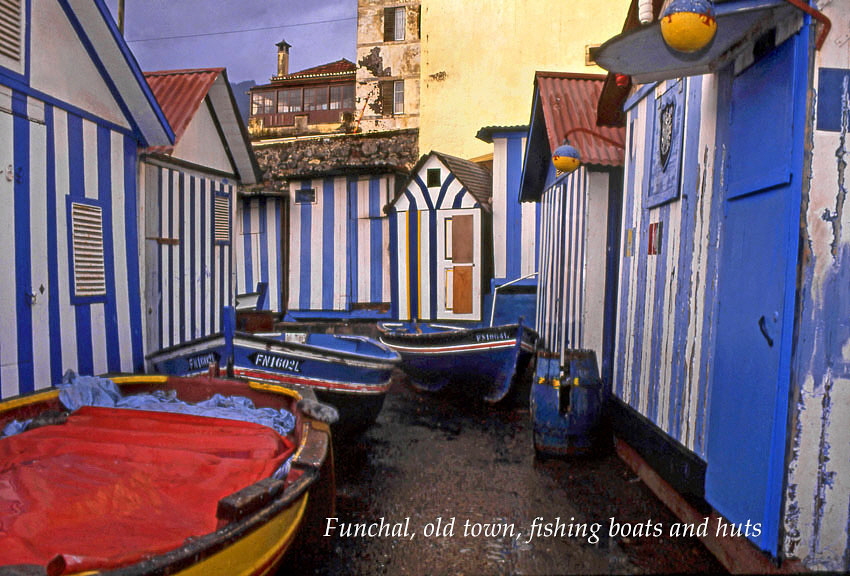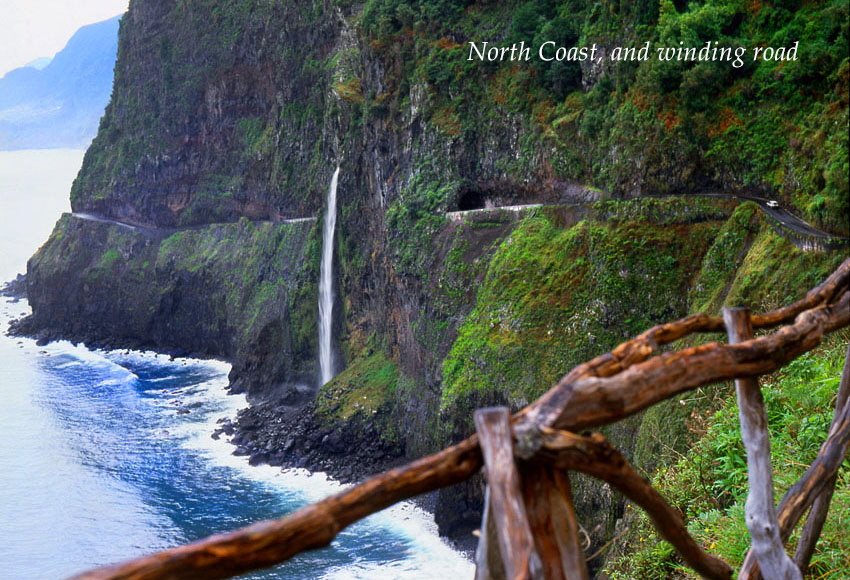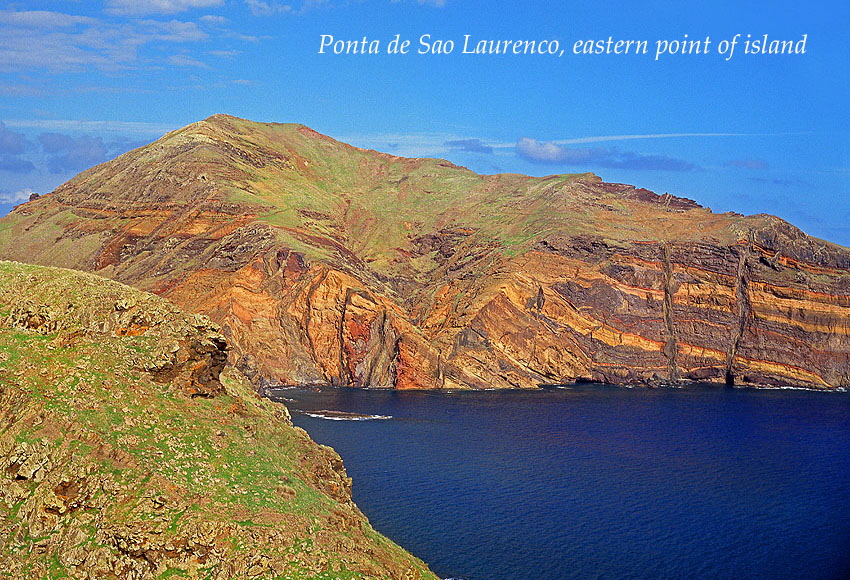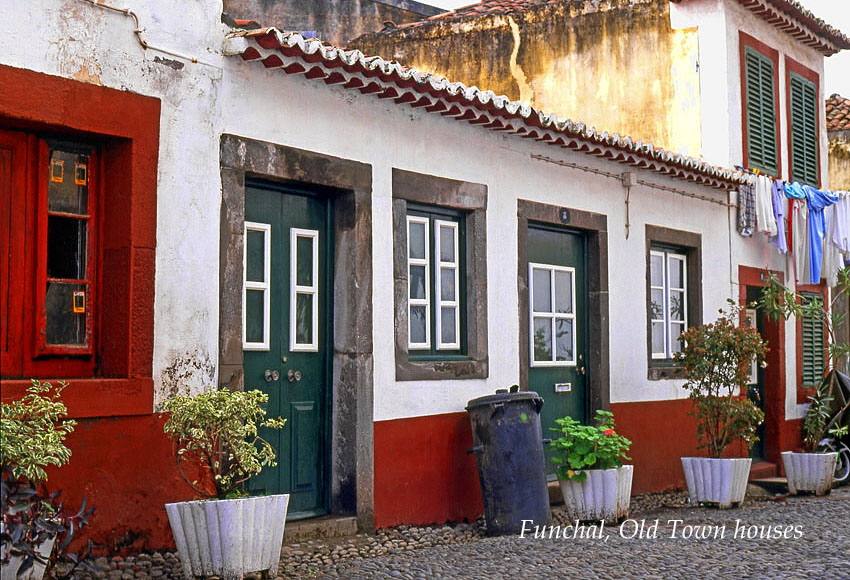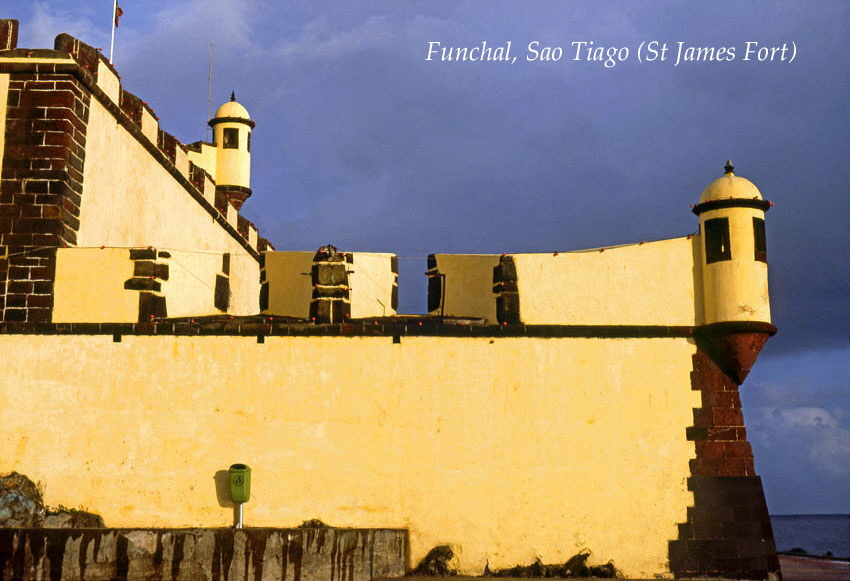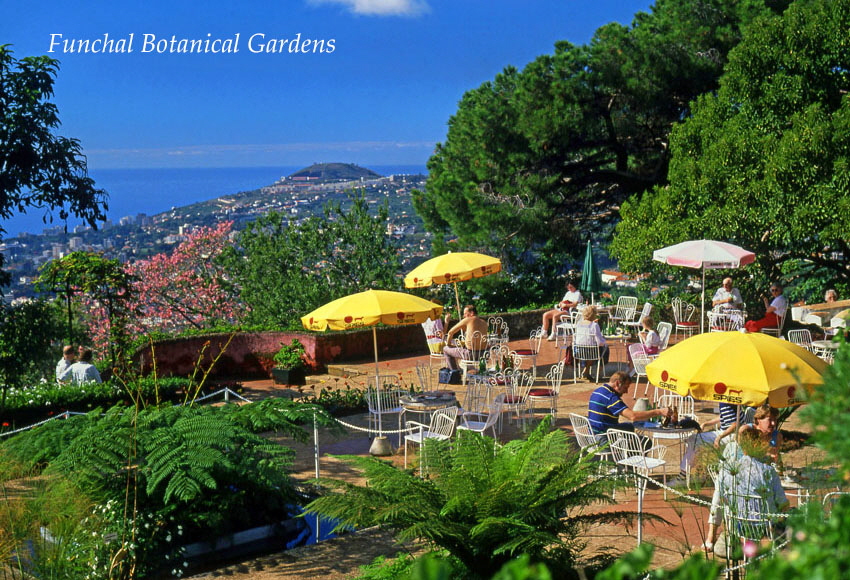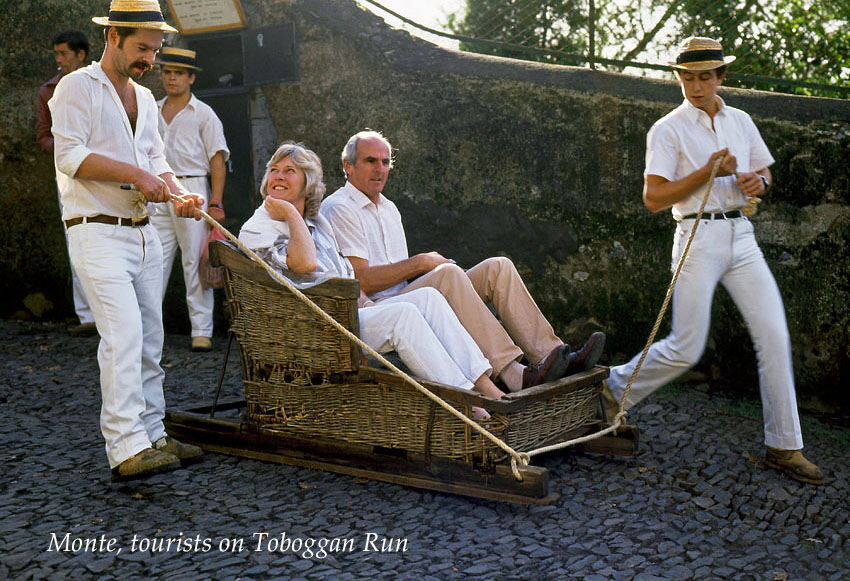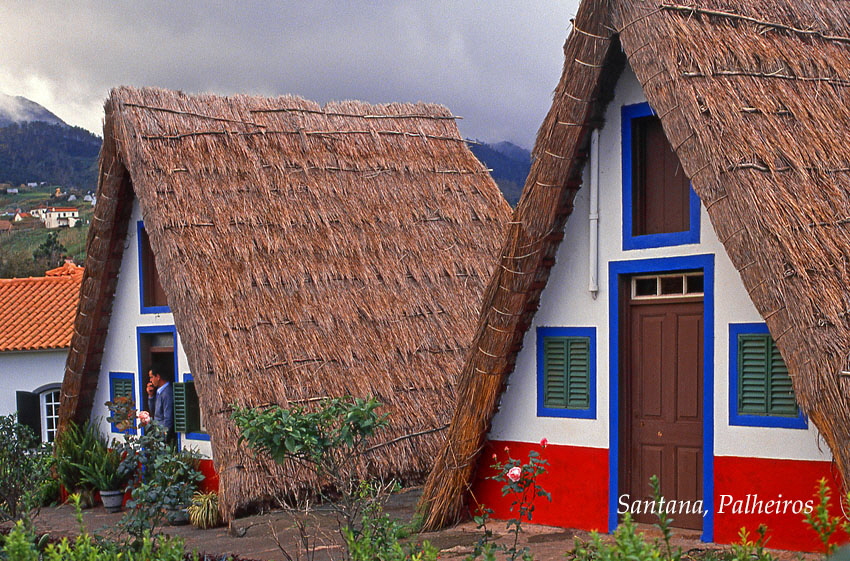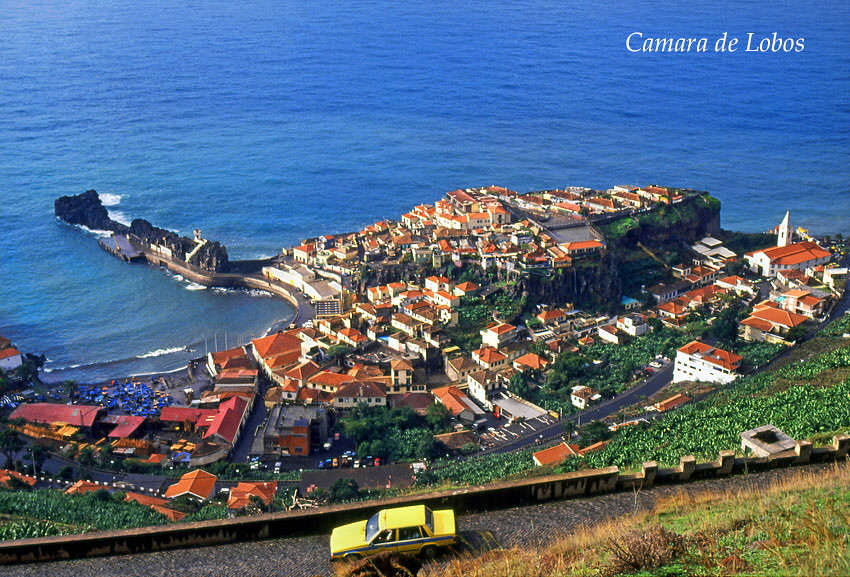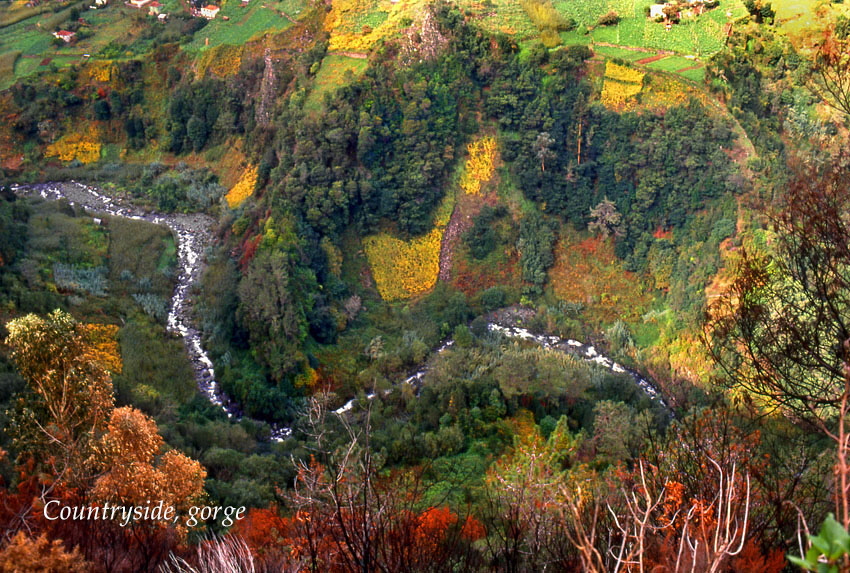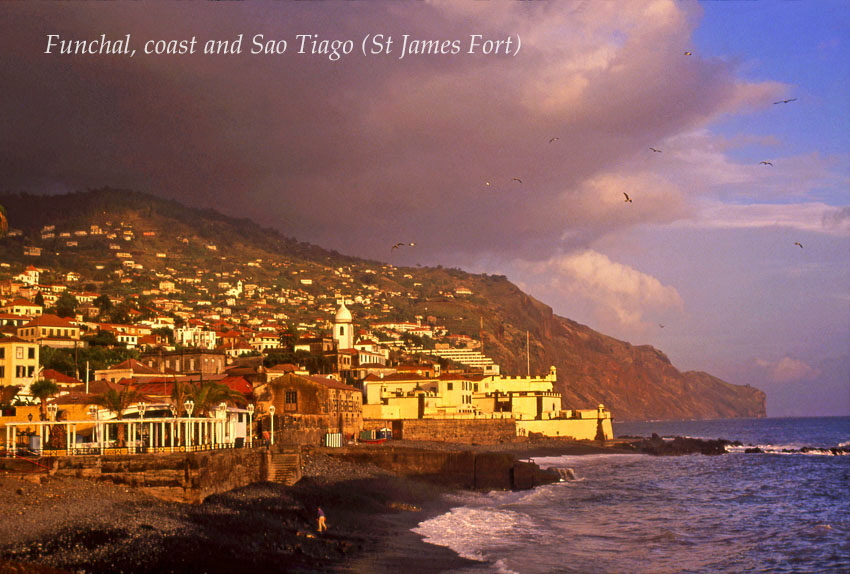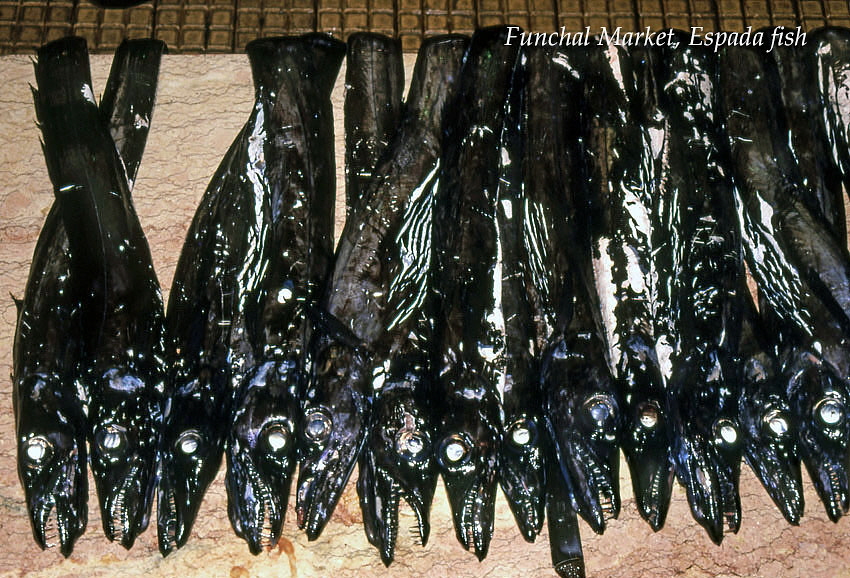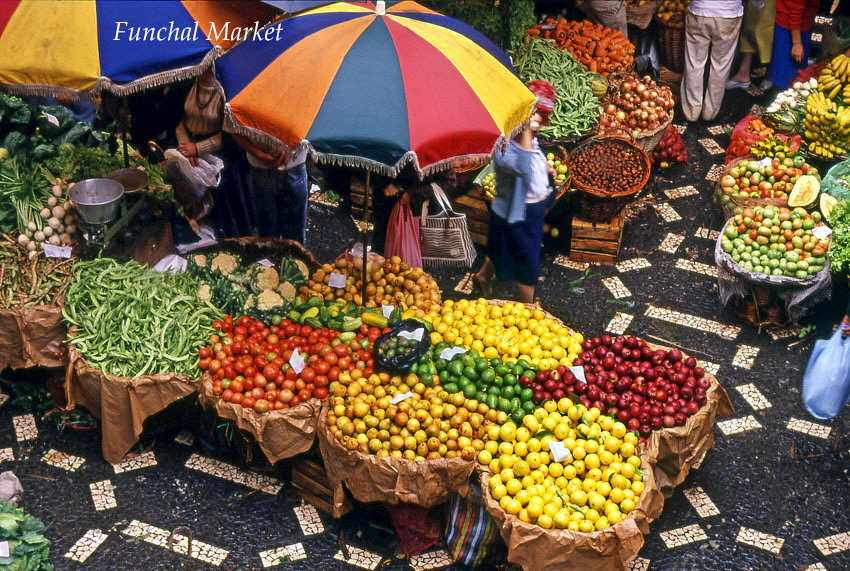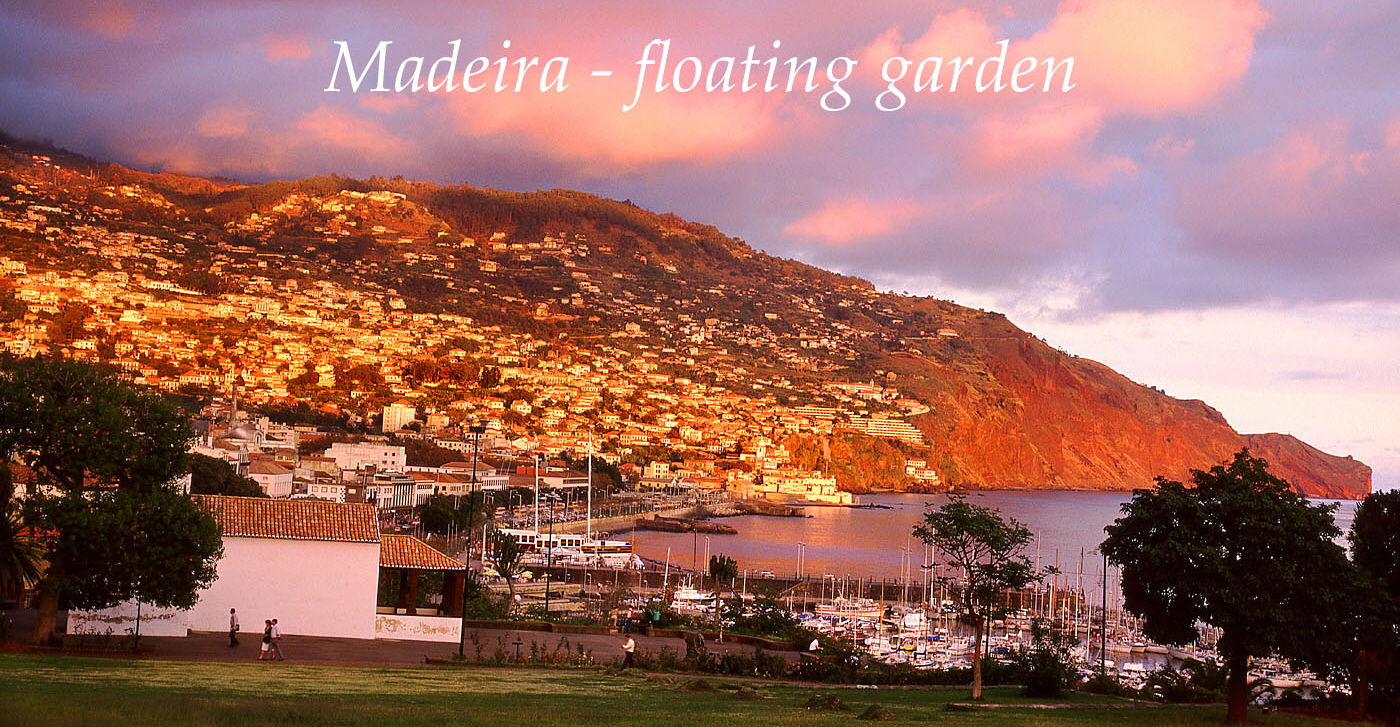
Funchal at sunset
The best way to arrive in Madeira is by sea, especially in the late afternoon. The setting sun sparkles on the roof tops of hundreds of orange-tiled houses, scattered over the green hillsides, and the island is at its loveliest. But nowadays, because of the modern international airport, few visitors come by sea, except for the cruise ships which regularly stop in Madeira en route for the Canaries or the Azores.
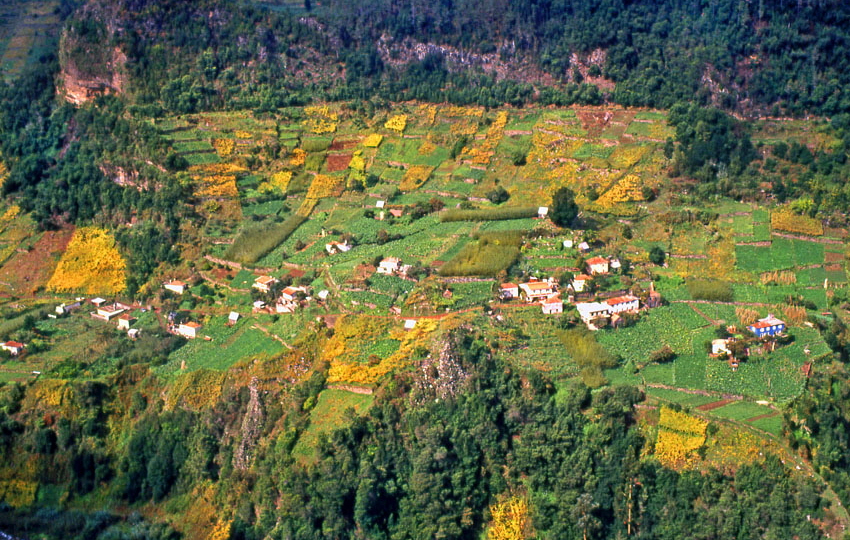
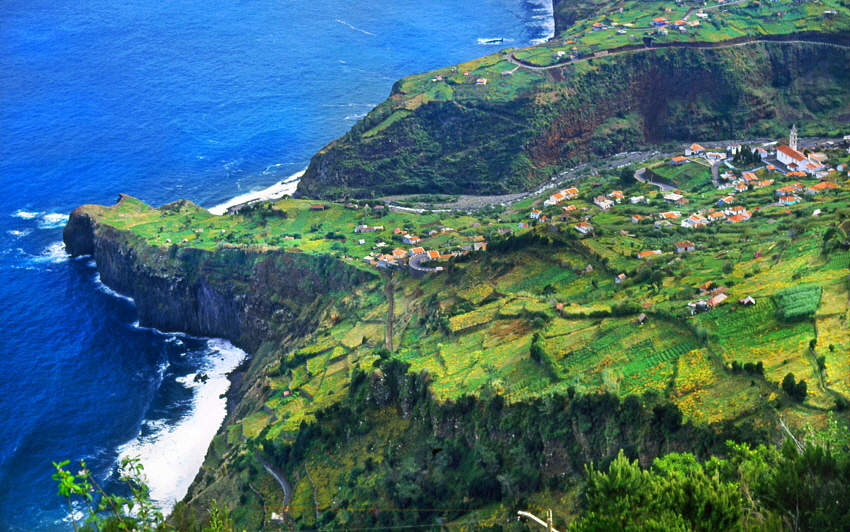
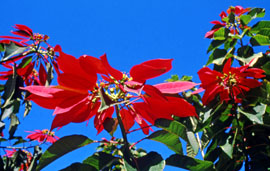
Poinsettia
Lying about 500 miles south of Portugal, in the Atlantic Ocean, Madeira covers an area of only 270 square miles. But despite its small size, the mountainous terrain mans that distances between the various town and places of interest are much greater than they would be otherwise. However, unlike some volcanic islands, the land is surprisingly lush and fertile. Whatever he season, the island is a perpetual floating garden. Orchids and hibiscus, bougainvillaea, blood-red poinsettias and ‘red-hot pokers’ all thrive in the mild subtropical climate.
Bananas and grapes also flourish on the island. Madeira has long been associated with the fortified wine, which bears its name, and vineyards are to be found all over the island.
Hibiscus
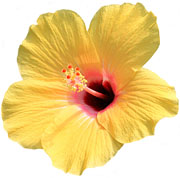
Funchal
Funchal, Town Hall Square
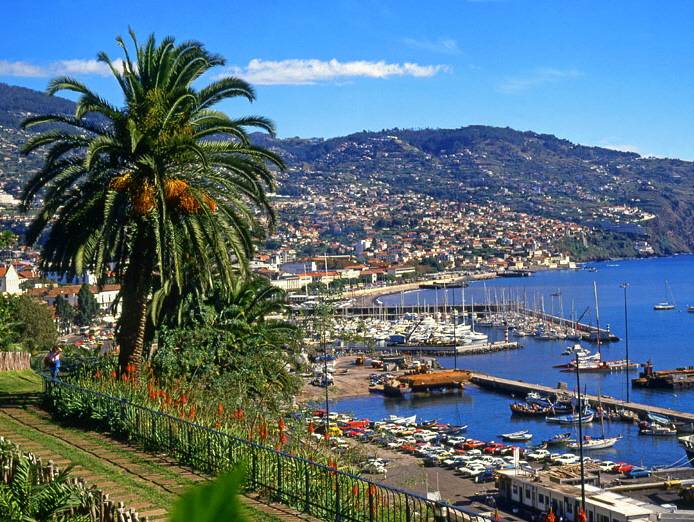
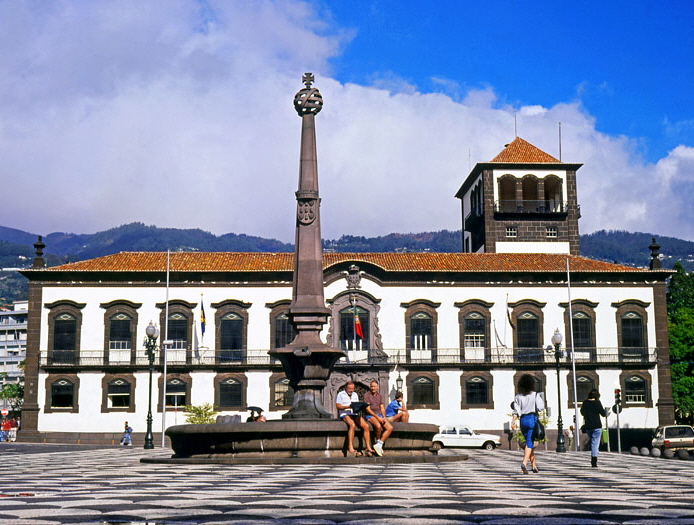

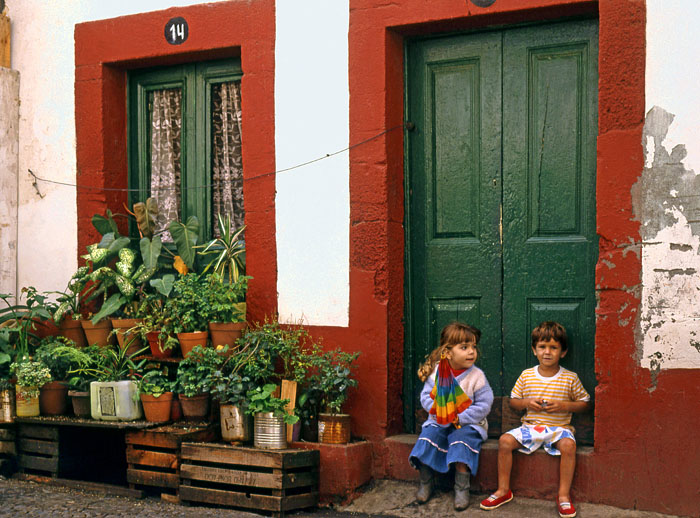
Funchal, Se Cathedral
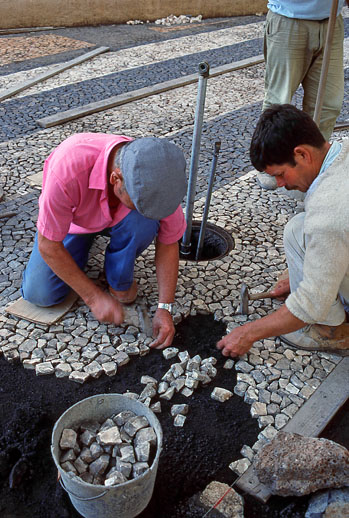
Constructing pavement mosaics
Funchal, Madeira’s tiny capital, makes a good base from which to tour the rest of the island. The town itself is best explored on foot, but take your time. Funchal is not a place to be rushed. Quiet squares bordered by elegant 17th and 18th century buildings, parks, pavement cafes and benches on the shady streets invite you to linger and take in the atmosphere. Even the pavements demand your attention - the painstakingly constructed mosaics that pattern the cobbled streets are real works of art.
Se Cathedral is the towns most important landmark. Dating from the 15th century, the design is delightfully simple with the exception of a finely carved Arab-style ceiling. Besides the cathedral, the town has dozens of other churches, most of which are richly decorated with paintings, carvings and crystal chandeliers.
For a small town, Funchal has more than its fair share of museums. Quinta das Cruzes has a fascinating 'archaeological garden’ where tombstones, relics from old buildings, waterspouts and fountains taken from locations all around the islands are displayed. At the Museu de Arts Sacra, art lovers are treated to a rare collection of 15th and 16th century Flemish paintings, a legacy from the island’s early trading with the Belgian city of Bruges.
Madeira is primarily a place of natural beauty and most visitors really enjoy Funchals’ many parks and gardens. The Botanical Gardens are a feast of colour, size and shape with species from all over the world. Its hillside location giving spectacular views over the town is an added bonus.
Archaeological garden
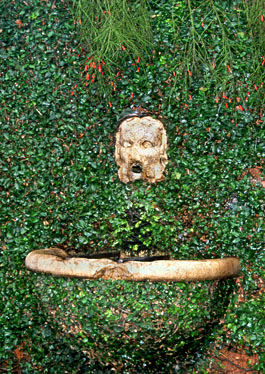
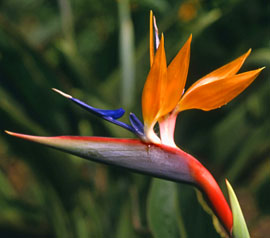
Bird of Paradise, Botanical Gardens
Farmers at Funchal Market

Funchal Market
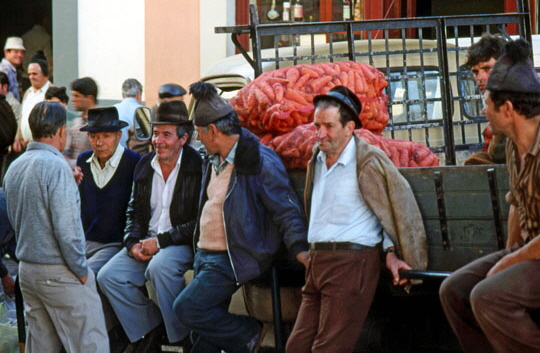
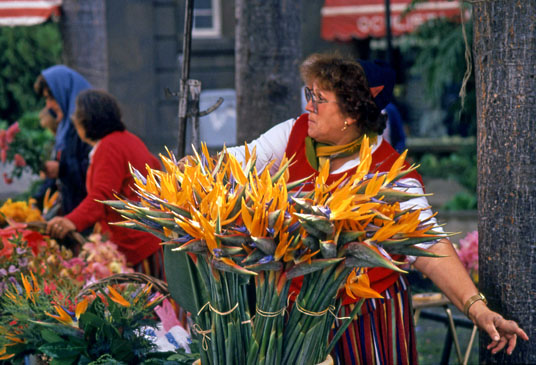
Flower seller
Funchal’s bustling market is at its best on Friday mornings when farmers from outlying villages bring their produce to sell in the town. Cabbages, carrots, onions and potatoes are carefully arranged alongside familiar European fruits, as well as bewildering selection of tropical varieties. The flower stalls are the most colourful sections of the market, with women dressed in national costume selling orchids, bird-of-paradise and other exotic blooms.
Another part of the market is devoted to fish. Surprisingly, there are only two main types of fish on sale, tuna and the local speciality - espada. Black in colour and about a metre in length, with an ugly mouth and razor sharp teeth, the espada or black scubbard is not exactly glamorous, although remarkable tasty. It’s found in the deep waters surrounding Madeira, living in depths of over 2000 feet (600 meters). Local fishermen have perfected the art of catching this type of fish by using lots of patience and lowering very long lines with about 150 hooks!
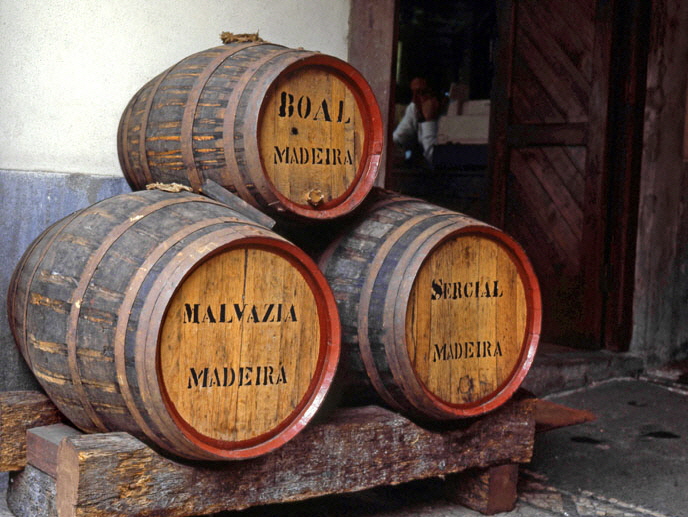
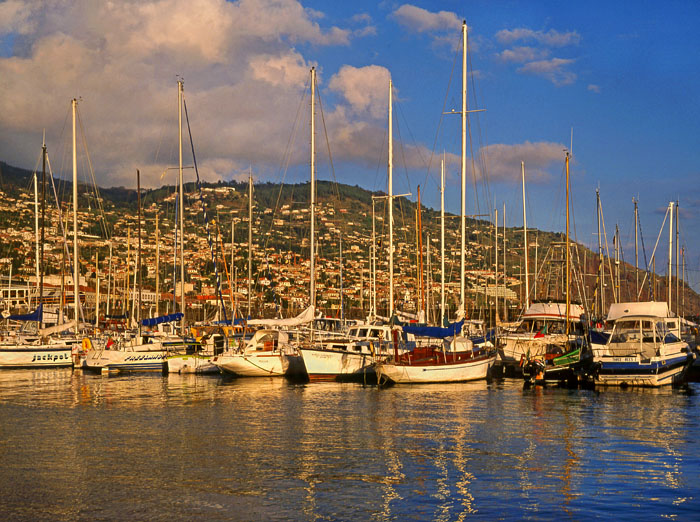
Madeira’s fortified wines - dry, medium and sweet
Funchal marina
The souvenir shops in Funchal do a brisk trade. Locally made wicker baskets are especially popular. A bottle of Madeira wine is, of course, a must on every visitor’s shopping list and there are the numerous ‘taste bars’ where you can sample the wines before you buy.
The marina and harbour area is a lively place for a stroll and there are several cafes and seafood restaurants where you can sit and enjoy a meal or a drink and watch the world go by. Elsewhere Funchal has a range of reasonably priced restaurants, all of which serve espada fish, fried, grilled or baked, depending on your taste. Espada should not be confused with the island’s other main speciality espatada which is grilled, skewered beef in a secret marinade.
Monte church
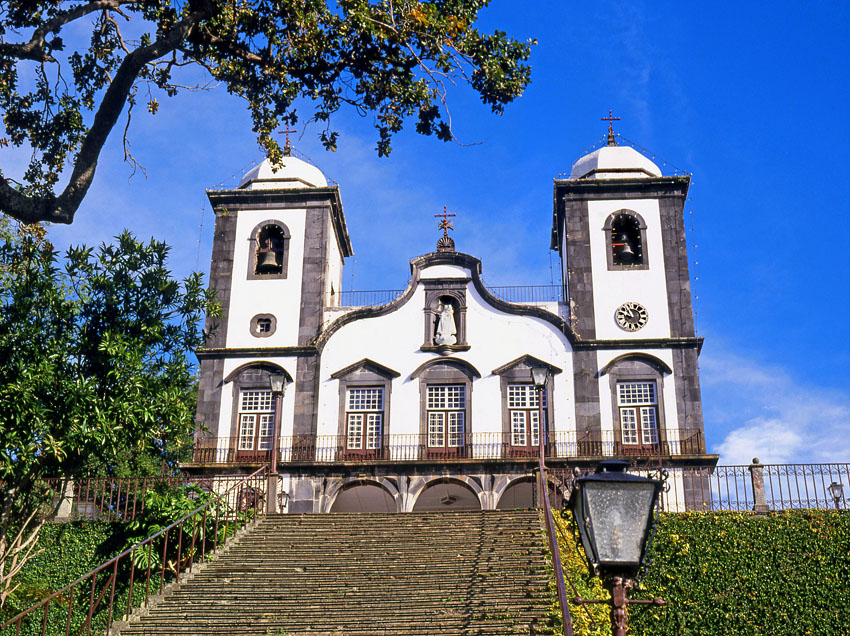
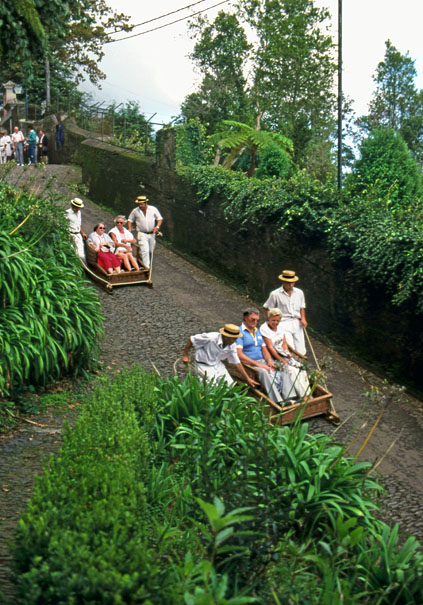
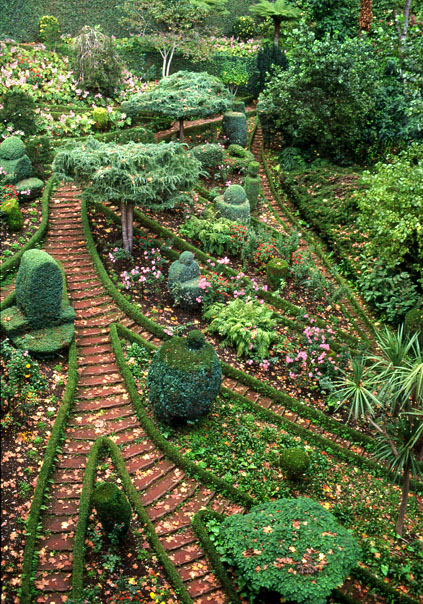
Toboggan run, and Monte gardens
A few kilometres above Funchal is the village of Monte. Its church, Our Lady of the Mount, is a landmark for miles around. But what makes Monte really famous is the carro de cesto or toboggan run. Invented as a form of transportation in 19th century, it’s now the island’s best known tourist attraction. The ‘toboggans’ are really large upholstered wicker baskets, mounted on runners. They are controlled (using ropes) by ‘drivers’ dressed in white uniforms and straw hats.
Winding roads, and steep villages
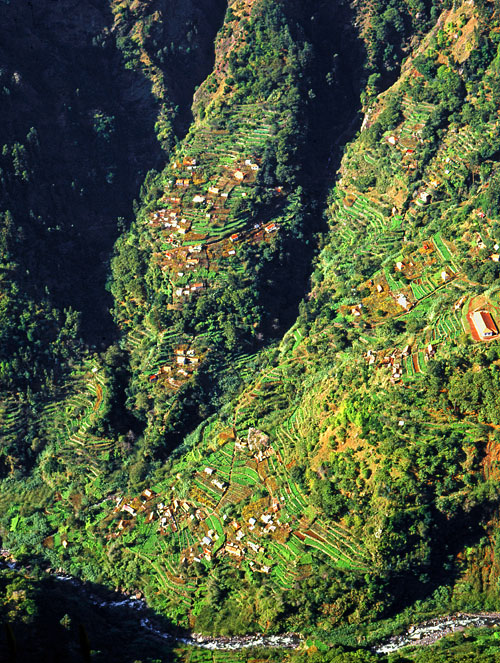
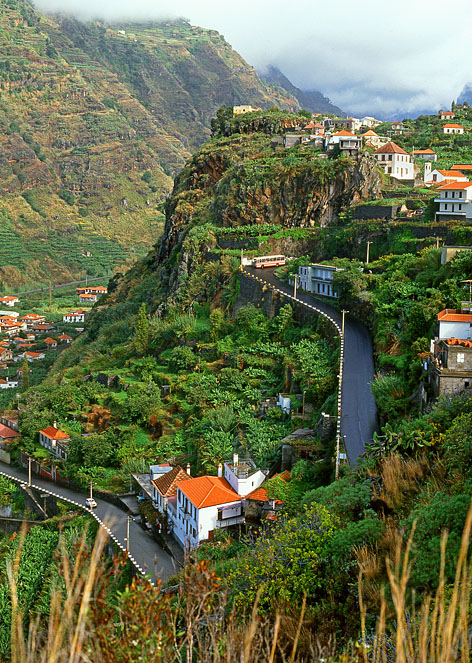
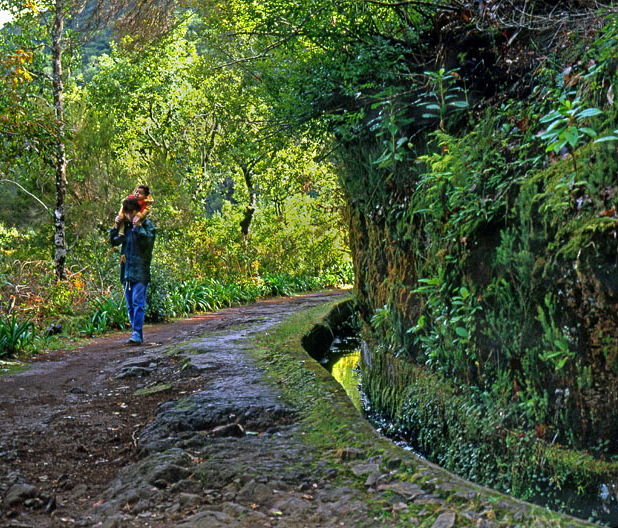
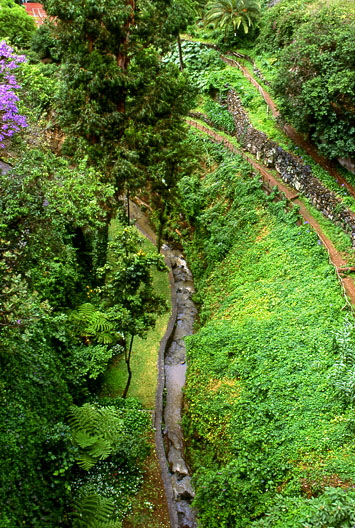
Levadas, and walking paths
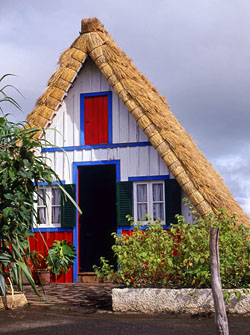
Santana village house
Wherever you go in Madeira, you will be greeted with the same lush countryside made up of terraced farms, patch works of green fields, banana plantations, vineyards, cold streams, rivers and waterfalls.
There are several ways to explore the island. If you don’t want to join organised coach excursions, you can rent a car or hire a taxi with a qualified driver-guide which is inexpensive and convenient. Whichever way you choose, do try to include at least one levada walk. Levadas are narrow canals, built as an ingenious method of channelling water to irrigate terrace crops. Madeira has a network of over 600 miles of levadas. Since they cut through the heart of forests, a levada walks allows you to enjoy the natural beauty of the island in a way that cannot be experienced from the window of a car or coach.
Due to the rough terrain, a one day island tour is impossible. Most organised tours offer separate visits to the east and west of the island. Porto Moniz, on the north-west tip of Madeira has a series of natural rock pools, and is reached by an exhilarating cliff drive. Santana, a village in the north-east, with a charming collection of picturesque thatched cottages, is not to be missed.
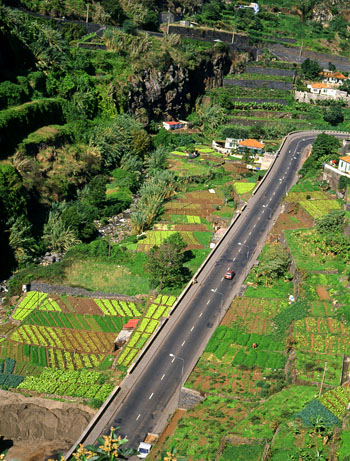
Camara de Lobos
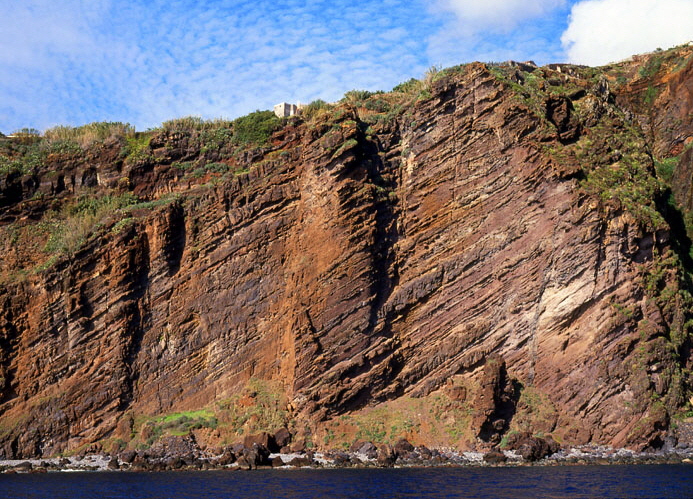

Cabo Girao sea cliff
Some parts of the island can be visited by boat. Cabo Girao is the world’s second tallest sea cliff. Nearby, the beautiful fishing village of Camara de Lobos with its tiny multicoloured fishing boats offers true picture-postcard scenery.
One thing Madeira lacks is sandy shores. However, the nearby island of Porto Santo more than compensates with its own beautiful sandy beaches.
18 images here ©JAYTRAVELPHOTOS
© COPYRIGHT notice. The images on this site are for viewing only.
To purchase any, for personal or commercial use, please contact us at jaytravelphotos@aol.com
____________________________________________________________________________________________________________________________

